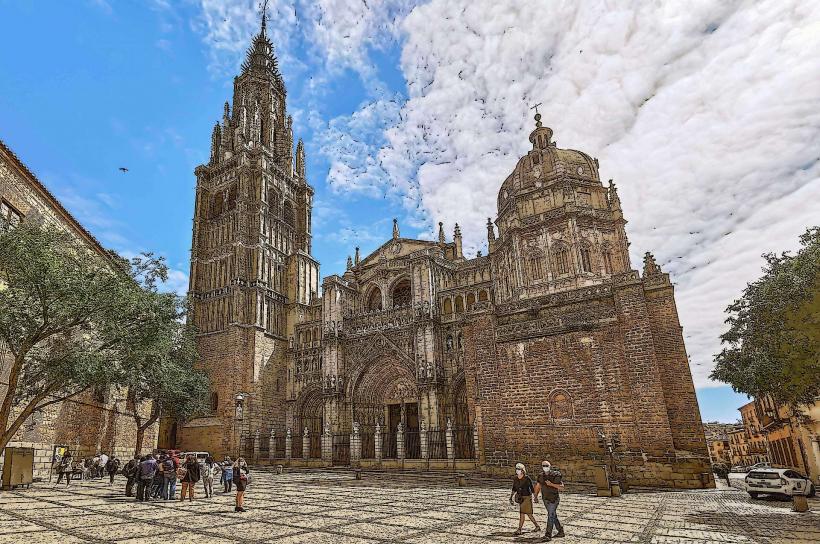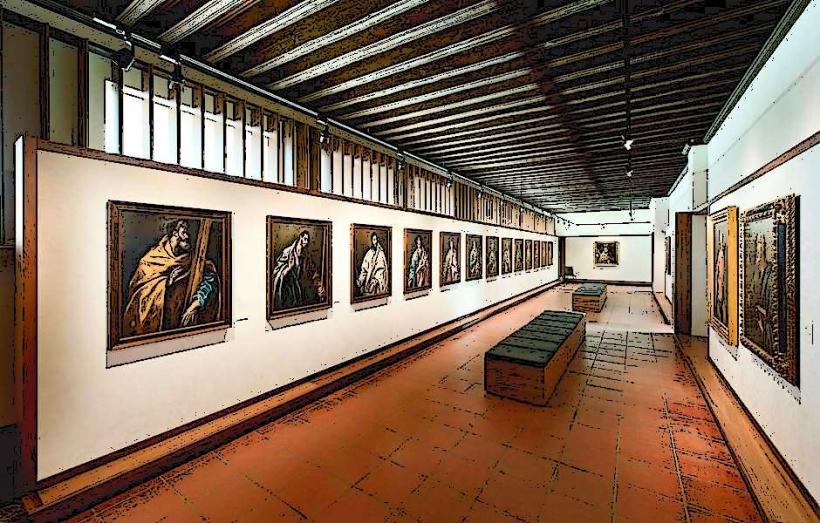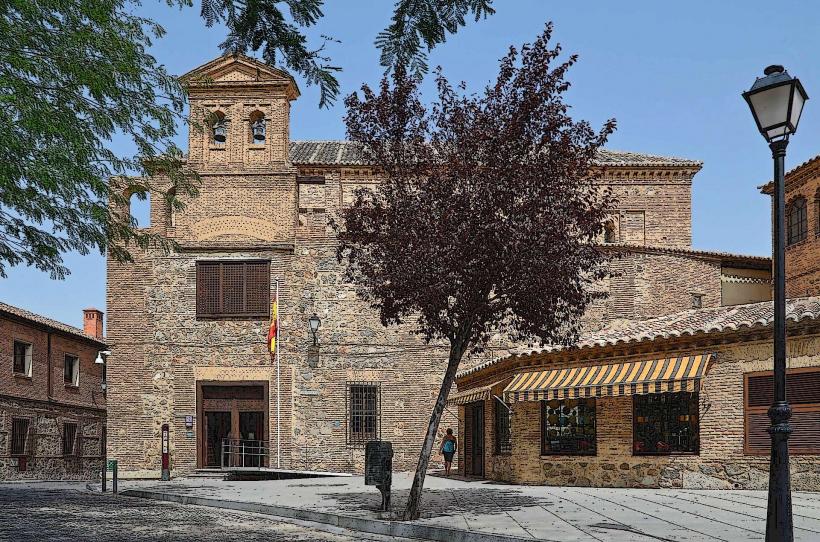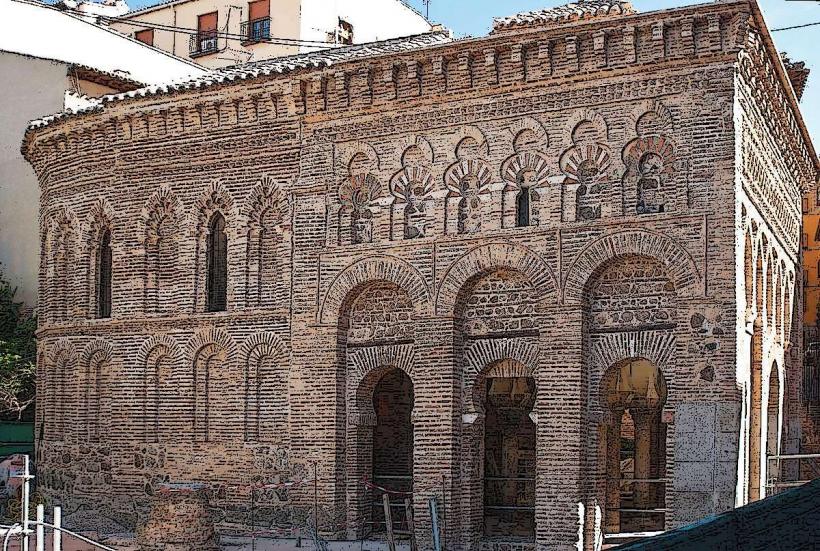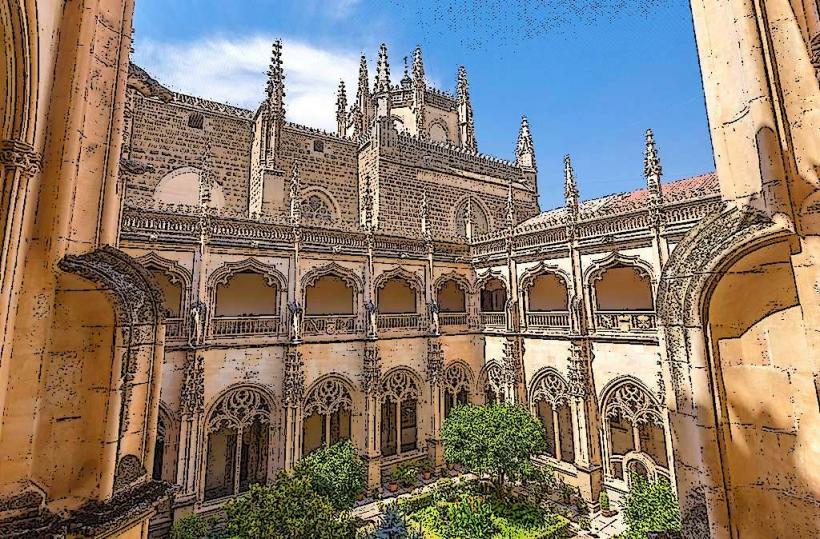Information
Landmark: Puente de San MartinCity: Toledo
Country: Spain
Continent: Europe
The Puente de San Martín (Saint Martin Bridge) in Toledo, Spain, is one of the most iconic and historic bridges in the city. This medieval bridge, spanning the Tagus River, is a remarkable feat of engineering and a significant symbol of Toledo’s rich history. The bridge connects the historic center of Toledo with the San Martín neighborhood on the opposite bank of the river.
Historical Background
The Puente de San Martín was built in the Middle Ages, likely around the 13th century during the Alfonso X period, although some evidence suggests parts of the bridge may date back to even earlier. It was originally constructed to facilitate access to the walled city, and over the centuries, it has been an important crossing point for both pedestrians and vehicles, serving as a vital link for trade, communication, and defense.
The bridge was named after San Martín, the patron saint of the San Martín neighborhood, and reflects the connection between religion and architecture in medieval Spain.
Architecture and Design
The Puente de San Martín is an impressive example of medieval Spanish engineering. It has been modified and reconstructed over the centuries, but much of its original medieval structure remains intact. The bridge is primarily made of stone and has several architectural elements that are characteristic of Gothic and Mudejar styles.
1. Structure
- The bridge spans the Tagus River with five arches, one of which is a large central arch flanked by smaller arches on each side. The central arch is particularly large, measuring around 18 meters in height, which was a significant engineering achievement at the time.
- The arches are supported by stone piers, and the bridge’s total length is about 80 meters. The stonework is well-crafted, and the bridge’s arches reflect the strength and durability typical of medieval bridge-building techniques.
2. Defensive Features
- One of the most striking features of the Puente de San Martín is the inclusion of defensive elements. The bridge has towers at both ends, which were originally intended for defense and control of access to the city.
- The towers are fortified, with machicolations (openings in the structure) where defenders could drop objects or launch projectiles at potential invaders. These defensive elements highlight the strategic importance of the bridge during times of conflict, particularly during the Reconquista and other military conflicts in the region.
3. Decorative Elements
- Over the years, the Puente de San Martín has been modified with decorative elements, including statues and religious symbols, which reflect the medieval Christian influence on the city and the bridge. The statue of Saint Martin, after whom the bridge is named, stands at the entrance to the bridge on the Toledo side, serving as both a religious and symbolic marker.
Strategic Importance
The Puente de San Martín was an essential crossing point during the Medieval and Renaissance periods. Its location near the historic center of Toledo meant that it was crucial for trade, defense, and the movement of troops. The bridge’s defensive features—such as the towers and gateways—enabled the city’s military forces to control access to the walled town, which was a significant advantage during times of conflict.
During the Spanish Civil War, the Puente de San Martín was once again a focal point of military operations, as the river served as an important natural boundary between different factions.
Restoration and Modern Use
Over the centuries, the Puente de San Martín has undergone several restorations and reinforcements to preserve its structure and maintain its use as an important crossing over the Tagus River. In the 20th century, significant work was done to reinforce the bridge and ensure it could handle modern traffic while maintaining its historic integrity.
Today, the bridge is open to pedestrians and vehicles, though there are restrictions to preserve its historic nature. The bridge is not only functional but also serves as a tourist attraction and a scenic viewpoint for those visiting Toledo.
The bridge is one of the most popular spots for visitors, offering stunning views of the Tagus River and the Toledo skyline, with its cathedrals, fortresses, and historic buildings visible in the distance. The Puente de San Martín has become a symbol of Toledo’s rich architectural and military history, and its picturesque setting makes it a favorite subject for photographers.
Visitor Information
- Location: The Puente de San Martín is located to the west of Toledo’s historic center, offering easy access to visitors traveling along the riverbanks. It connects the old town with the San Martín neighborhood.
- Access: The bridge is accessible to both pedestrians and vehicles, but visitors are encouraged to explore on foot for the best views and experience.
- Nearby Attractions: The bridge is close to several other notable landmarks, including the Alcázar of Toledo, the Toledo Cathedral, and the Roman Bridge. Visitors can enjoy a scenic walk along the riverbanks and explore the historic streets of Toledo.
Conclusion
The Puente de San Martín is not only a functional bridge but also a historic monument that reflects Toledo’s medieval past and strategic importance in Spanish history. With its impressive architecture, defensive features, and beautiful setting, the bridge remains one of Toledo’s most iconic landmarks. Whether you're a history enthusiast, architecture lover, or simply seeking stunning views of the city, the Puente de San Martín offers a unique experience that captures the essence of Toledo’s cultural and architectural heritage.

